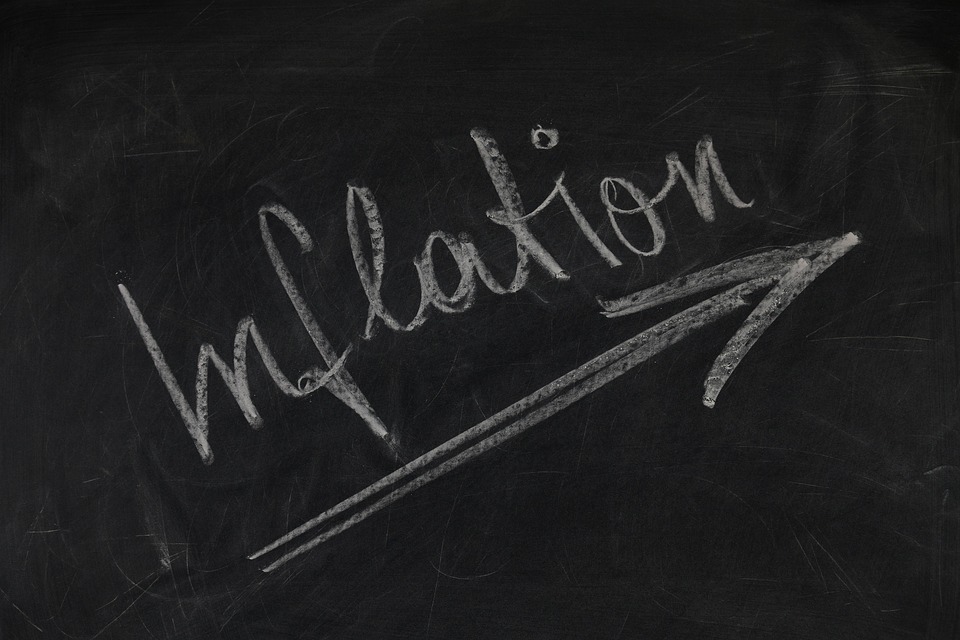Financial Markets And Inflation

This is an unedited draft chapter section from my inflation manuscript. I am not too happy with this, but perhaps getting savaged on the internet might give me some additional things to add. This section follows more detailed discussions of equities and residential real estate.
We will now conclude this chapter with some general comments on the relationship between inflation and the overall financial markets. What we see is that there are some areas of direct linkage between inflation (as measured by a consumer price index) and some financial assets, while other assets have a more complex relationship. As a result, making generalizations is difficult – equity prices are not going to move the same way as the prices of cheesy snacks at your local convenience store.
Overall Effects Mixed
We can divide financial assets’ “initial reaction” to inflation into a few categories.
- A handful of financial assets are indexed to inflation (index-linked bonds).
- Relatively direct linkage between the financial asset price and price indices. This definitely includes commodity trading (futures and other derivatives), as well as real estate assets (although real estate prices do not translate one-to-one with rents). Many currencies are linked to commodity prices, although in some cases, this might be more market folklore than based on strong fundamentals.
- Financial assets that benefit from increased prices in particular areas. Equities and bonds issued by commodity producers or firms that focus on those goods and services. In “normal” times, price changes will tend to be mixed, with some falling while most others rise. In an inflationary spike, we tend to see shortages that cause certain goods and service prices to spike, benefiting certain firms.
- Some firms are intermediaries that can be viewed as agnostic towards inflation, such as financial firms, and retailers. For example, retailers could keep their sales markup over their purchase price constant. To the extent that nominal sales increase, this would increase profits – but their operating costs might also increase.
- To the extent that higher inflation is linked to higher nominal incomes, default risk falls, benefiting credit products.
- Since the usual reaction of a central bank to inflation is to hike interest rates, interest rate-sensitive products (high-quality bonds, “dividend stocks”) are put under pressure.
The exact mix of financial assets varies across countries. For example, the Canadian equity market tends to have a high weighting of commodity producers, unlike continental Europe. As such, one ought to do the analysis on a sector-by-sector basis, and not rely on aggregate indices.
I specified that the reaction above was the “initial reaction” since inflation does not happen in a vacuum. Central banks are also reacting to inflation. If they do not like what they see, they will raise rates rapidly – such as we saw in 2022. This in turn raises fears of a recession – which would generally result in deflationary forces that might reverse previous gains for inflation-sensitive financial assets.
This reaction by central banks is generally expected – and it messes up a simplistic analysis of things like equities that assume that equities will mechanically react to the inflation data as it arrives. Even if a firm is benefiting from current inflation, panicked investors might assume that will reverse if the central bank goes on the warpath.
The reality that equity investors are pricing future events – or are supposed to be pricing future events – means that trying to explain equity returns with inflation is problematic. If annual inflation is high in a month, we are comparing what happened over the past year in an inflation index (with a publication lag) versus equity returns in a month where the equity market is looking forward to earnings, central bank activity, etc. As a result, I am not enthusiastic about analysis that attempts to find a statistical relationship between equity returns and inflation. Admittedly, I am not an equities person, so I cannot claim to be familiar with all the attempts to do so.
Concluding Remarks
Popular Austrian economics leads a lot of financial market commentators towards suggesting a mechanical relationship between inflation and financial markets. Newly created money allegedly goes first to financial market players that drive up financial markets, and then the money is distributed to others who then drive up other prices in the real economy. (This is the internet version of The Cantillon Effect.) And sometimes, the money just drives up financial market prices and not consumer prices (as in the 2010s) for mysterious reasons.
As my previous discussion indicates, this is too simplistic. Some prices in the financial markets – e.g., crude oil and gasoline futures – are used to determine wholesale prices, so there is no distinction between prices in the “financial markets” and the “real economy.” Other financial prices are driven by expectations – and expected inflation can have mixed effects on the expected value of financial assets. Although it is not surprising that forward-looking asset prices would pick up before measured economic activity starts increasing after a recession, things get more complicated when the end of an expansion is a prospect.
The markets that I am happiest looking at – government bonds and index-linked bonds – have a relatively straightforward relationship to inflation (courtesy of central banks being creatures of habit). However, when reading commentary about other asset classes, I was very much unimpressed with attempts to link their outlooks to inflation.
More By This Author:
Government Bonds As Money
MMT After The Pandemic Shock
Inflation Index Calculation Basics
Disclaimer: This article contains general discussions of economic and financial market trends for a general audience. These are not investment recommendations tailored to the particular needs of an ...
more


